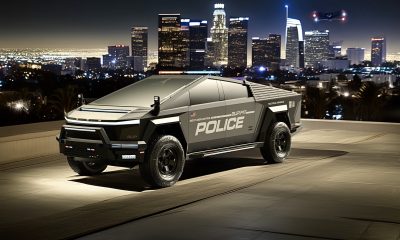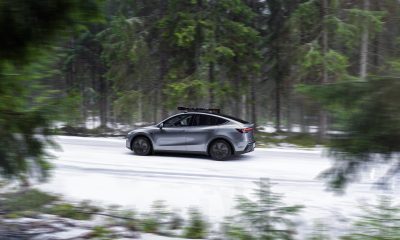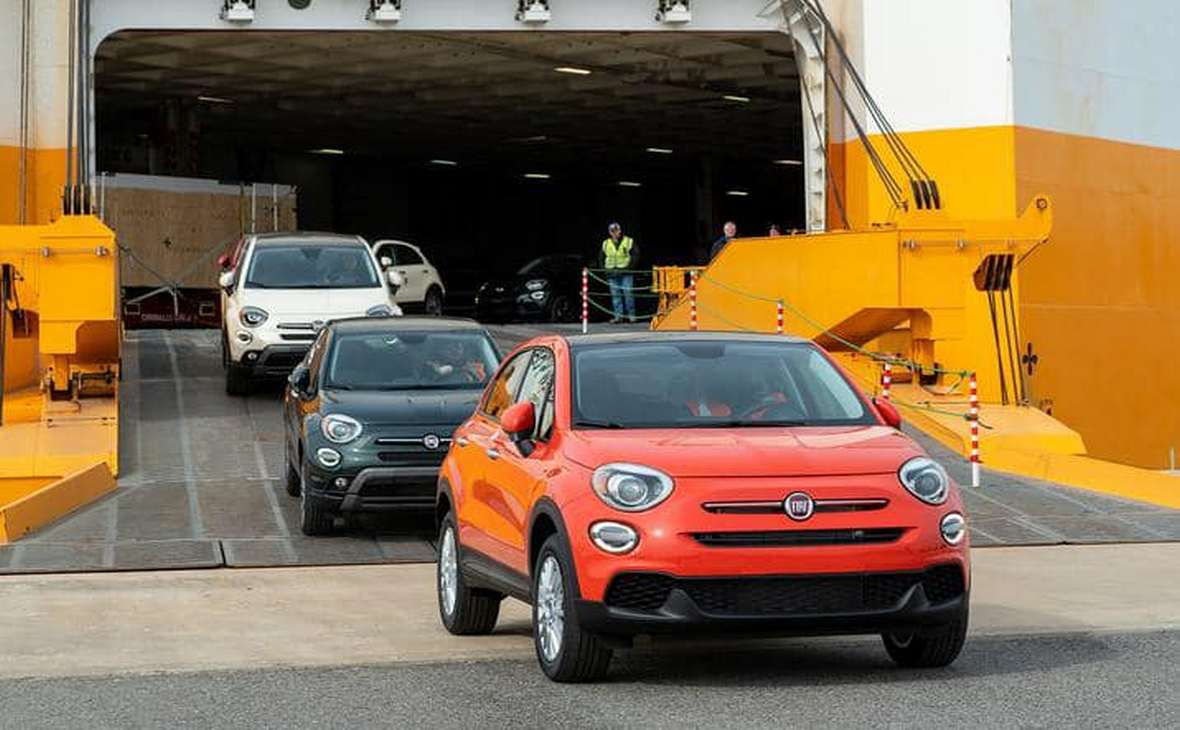

News
Tesla gives Fiat a wake up call: ‘fake’ electric cars can still manipulate EU emissions standards
New CO2 regulations set to take effect in Europe have several loopholes in place that could derail the goal of reducing new car emissions by 37.5% in the region by 2030, according to a study published by advocacy group Transport & Environment. In a worst-case modeling scenario, gaming of the rules could also result in almost two million fewer zero or low emissions vehicles coming to market between 2025 and 2030, and of those in the market, half might be plug-in hybrids built for compliance, not innovation.
In order to propel the creation of a battery electric auto industry in the region, European Union members and parties participating in the discussions over the new CO2 regulations included incentives in the agreement that were tied to specific vehicle sales. Auto manufacturers with 15% of their sales coming from zero and low emission vehicles by 2025 and 35% from 2030 onwards will have their CO2 targets reduced by a maximum of 5%. This effectively means a company’s new fleet-wide CO2 output would only need to be reduced to 34.4% by 2030 instead of 37.5%, as calculated in the study.
Companies have further been allowed to pool their fleets together to help reach these goals, something which Tesla has recently taken advantage of by partnering with Fiat Chrysler. As a manufacturer of zero-emission vehicles, counting Tesla’s fleet with Fiat’s lowers the average per-vehicle CO2 output, thus lessening the burden for Fiat to meet the emissions standards while Tesla profits from the deal.

On its face, the 5% trade-off for lower emissions standards would be the entry of new, more innovative clean energy vehicles on the market; however, the inclusion of plug-in hybrids in that calculation could be problematic and used to game the system. In order to qualify as a low emissions vehicle, a hybrid car only needs to be under a threshold of 50 g/km CO2 output during testing which assumes full use of the vehicle’s battery. Because most of these plug-in hybrids have very low battery ranges, they’re often not used in practice in favor of the internal combustion engine, thus increasing their real-world CO2 output to around 120 g/km.
The technology behind plug-in hybrids is less innovative and therefore cheaper to produce, so the financial appeal of producing more of these types of vehicles over battery-only electric vehicles is high. The Transport & Environment study estimates that this effect will lead to about 2 million fewer all-electric cars being produced in favor of the cheaper, ‘fake’ electric compliance hybrids.
Other loopholes in the EU regulations also contribute to a reduction in CO2 outcomes. Fourteen countries where non-existent or nascent low emissions vehicle markets were identified will receive nearly double the emissions credit for eco-friendly cars sold to encourage development in the regions.


Simply, a large manufacturer could register thousands of vehicles in one of these markets, acquire double credit for each vehicle, and then quickly sell the vehicles in an established market where demand is higher. When sold, the cars would technically be “used” for record keeping purposes, but new to consumers and presented that way. This would circumvent the point of developing a low emissions market in those countries, further limiting the expansion of low emissions car availability.
The EU member states where double credits apply are Ireland, Greece, Poland, Slovenia, Croatia, the Czech Republic, Slovakia, Bulgaria, Romania, Estonia, Latvia, Lithuania, Cyprus, and Malta.
The final (possible) loophole identified in the Transport & Environment study lies with the inclusion of Norway in the EU regional calculations. The country has not yet formally been included in the 2025/30 standards but is part of the 2020/1 standards currently in effect and will likely be included in the upcoming rules.
Norway is requiring 100% of its vehicles to have zero emissions by 2025, thus guaranteeing sales of those types of cars in a market where ICE vehicles are not competitive. Automakers could concentrate their sales in that region and make less effort to sell in the rest of Europe, all while still remaining compliant with the regulations. Reaching compliance in this manner is another way the intent of the coming CO2 reduction requirements can be manipulated.

The authors of the Transport & Environment study have laid out their proposals to overcome these loopholes, but considering that they were included to win the support of the auto industry in the region, further changes to the regulations seem unlikely. Also, the study could be taking an overly pessimistic view of the possible outcomes the loopholes could lead to.
Consumer markets, even without significant CO2-related regulation, are already showing trends towards increasing low emission vehicle demands, especially for battery electric vehicles like those sold by Tesla. This “Tesla Effect” has been noted by the upper echelons of legacy auto and several have committed to billions in electric fleet investments. Porsche is unveiling its first production electric vehicle, the Taycan, this September and has plans to retire its diesel-powered lineup and embrace electrification. Ford has also recently committed to electrifying its F-series, most notably the classic F-150, as well as invest $11 billion dollars to produce 40 electrified vehicles by 2022.
News
SpaceX’s Crew-11 mission targets July 31 launch amid tight ISS schedule
The flight will lift off from Launch Complex 39A at Kennedy Space Center in Florida.
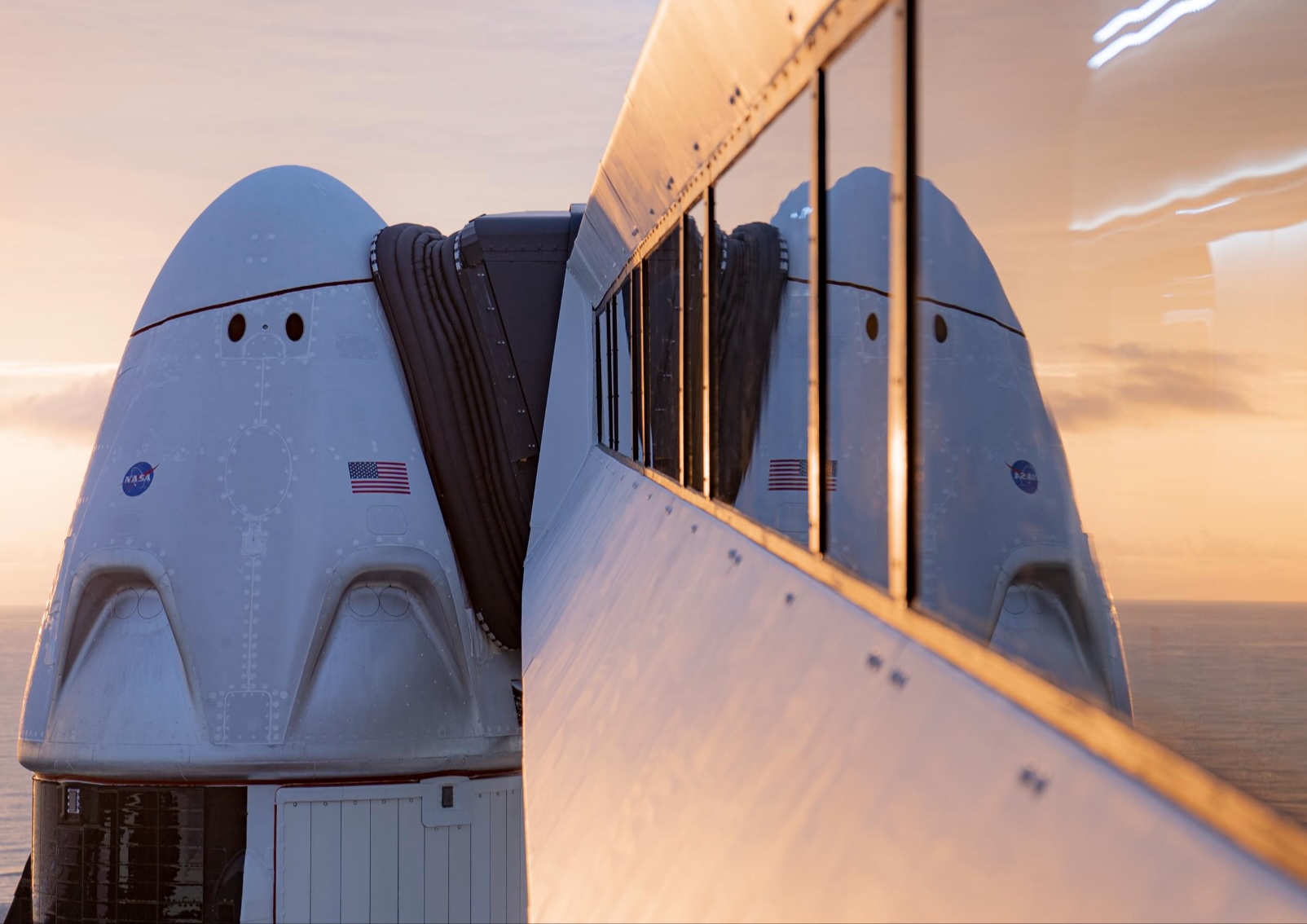
NASA and SpaceX are targeting July 31 for the launch of Crew-11, the next crewed mission to the International Space Station (ISS). The flight will lift off from Launch Complex 39A at Kennedy Space Center in Florida, using the Crew Dragon Endeavour and a Falcon 9 booster.
Crew Dragon Endeavour returns
Crew-11 will be the sixth flight for Endeavour, making it SpaceX’s most experienced crew vehicle to date. According to SpaceX’s director of Dragon mission management, Sarah Walker, Endeavour has already carried 18 astronauts representing eight countries since its first mission with NASA’s Bob Behnken and Doug Hurley in 2020, as noted in an MSN report.
“This Dragon spacecraft has successfully flown 18 crew members representing eight countries to space already, starting with (NASA astronauts) Bob (Behnken) and Doug (Hurley) in 2020, when it returned human spaceflight capabilities to the United States for the first time since the shuttle retired in July of 2011,” Walker said.
For this mission, Endeavour will debut SpaceX’s upgraded drogue 3.1 parachutes, designed to further enhance reentry safety. The parachutes are part of SpaceX’s ongoing improvements to its human-rated spacecraft, and Crew-11 will serve as their first operational test.
The Falcon 9 booster supporting this launch is core B1094, which has launched in two previous Starlink missions, as well as the private Ax-4 mission on June 25, as noted in a Space.com report.
The four-members of Crew-11 are NASA astronauts Zena Cardman and Mike Fincke, as well as Japan’s Kimiya Yui and Russia’s Oleg Platonov.
Tight launch timing
Crew-11 is slated to arrive at the ISS just as NASA coordinates a sequence of missions, including the departure of Crew-10 and the arrival of SpaceX’s CRS-33 mission. NASA’s Bill Spetch emphasized the need for careful planning amid limited launch resources, noting the importance of maintaining station altitude and resupply cadence.
“Providing multiple methods for us to maintain the station altitude is critically important as we continue to operate and get the most use out of our limited launch resources that we do have. We’re really looking forward to demonstrating that capability with (CRS-33) showing up after we get through the Crew-11 and Crew-10 handover,” Spetch stated.
Lifestyle
EV fans urge Tesla to acquire Unplugged Performance for edge in fleet and security industry
Unplugged Performance has built a name for itself by producing performance upgrades for Tesla vehicles.
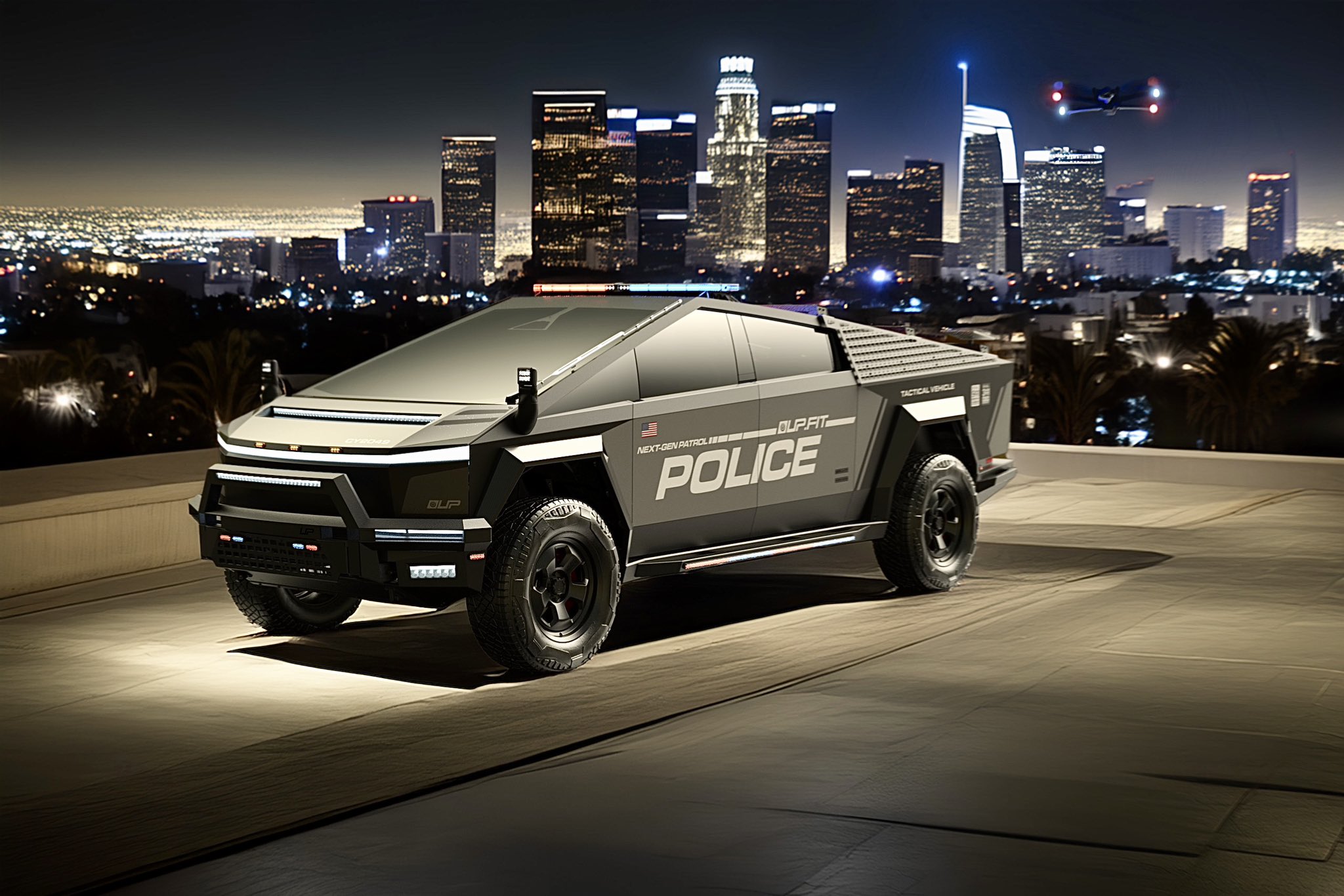
A growing number of Tesla enthusiasts and longtime community voices are calling on the electric vehicle maker to acquire Unplugged Performance, a California-based aftermarket company best known for tuning Tesla vehicles and developing specialized government fleet solutions under its UP.FIT division.
The idea was once considered a niche proposal among EV fans, but it is now gaining serious attention not just as a performance play but as a strategic move to deepen Tesla’s roots in the fleet and security industry.
A strategic fit
Unplugged Performance has built a name for itself by producing performance upgrades for Tesla vehicles, from track-optimized components to visual and aerodynamic upgrades. But in recent years, its UP.FIT division has pivoted toward a more functional future by outfitting Tesla vehicles like Model Ys for police, military, and government use.
That work has sparked growing calls for closer collaboration with Tesla, especially as the EV maker increasingly leans into autonomy, AI, and fleet services as core components of its next chapter.
“I posted this four years ago, but I think it’s more true now than ever,” wrote Whole Mars Catalog, a well-known Tesla investor and FSD Beta tester, on X. “Tesla should buy Unplugged. But not just as a Performance division. What they are doing with UP.FIT unlocks large government and commercial fleet purchases that can improve utilization.”
Tesla fans such as shareholder Sawyer Merritt echoed the sentiment, calling Unplugged a “great fit within Tesla.” adding, “They are literally located directly next to Tesla’s design studio in Hawthorne.”
Enabling the next wave
Supporters of the idea noted that integrating Unplugged into Tesla’s corporate structure could help accelerate the adoption of autonomous technologies in government sectors. With UP.FIT patrol cars already in use across some U.S. police departments, Tesla fans envisioned a future where self-driving Teslas could potentially revolutionize law enforcement, search-and-rescue, and public service logistics.
“Just imagine how autonomous patrol cars could transform policing and bring us into a safer future,” the veteran FSD tester wrote.
The benefits could also extend to Tesla’s existing consumer base. “They also have some incredible products in the works that I think will appeal to many ordinary Tesla drivers — not just those looking for performance or mods. Stuff that’s so good it should have come straight from the design studio next door,” Whole Mars Catalog noted.
Unplugged Performance, founded in 2013, shares not just a product vision with Tesla, but also geography. Its Hawthorne headquarters sits directly adjacent to Tesla’s design studio, and the two companies have maintained a close working relationship over the years. The aftermarket firm has long positioned itself as a “mission-aligned” partner to Tesla.
In response to the recent calls for acquisition, Unplugged Performance acknowledged the support from the community. “Our very existence is to support the Tesla mission with @UpfitTesla and @UnpluggedTesla,” Unplugged CEO Ben Schaffer posted on X. “We love working with Tesla and are grateful for the community’s support since 2013!”
News
Tesla debuts hands-free Grok AI with update 2025.26: What you need to know
All new Tesla vehicles delivered on or after July 12, 2025, will include Grok AI out of the box

Tesla has begun rolling out Grok, an in-car conversational AI assistant developed by xAI, to eligible vehicles starting July 12. The feature marks the most direct integration yet between Elon Musk’s artificial intelligence startup and Tesla’s consumer product lineup, offering drivers hands-free access to a chat-style companion while on the road.
Grok comes pre-installed on new vehicles
According to Tesla’s FAQ page for the feature, all new vehicles delivered on or after July 12, 2025, will include Grok AI out of the box. Owners of older vehicles may gain access through an over-the-air update, provided their vehicle meets a few hardware and software requirements.
Specifically, Grok is currently only supported on Tesla models equipped with an AMD infotainment processor and running vehicle software version 2025.26 and higher. Compatible models include the Model S, Model 3, Model X, Model Y, and Cybertruck. A Premium Connectivity subscription or active Wi-Fi connection is also required.
Tesla notes that additional vehicle compatibility may arrive in future software updates.
Grok’s features and limitations for now
Drivers can engage with Grok using the App Launcher or by pressing and holding the voice command button on the steering wheel. Grok is designed to answer questions and hold conversations using natural language, offering responses tailored to its chosen personality—ranging from “Storyteller” to the more eccentric “Unhinged.”
For fun, Tesla posted a demonstration of Grok likely running on “Unhinged” talking about what it would do to Optimus when they are on a date, much to the shock of the humanoid robot’s official social media account.
It should be noted, however, that Grok cannot currently issue commands to the vehicle itself, at least for now. Traditional voice commands for tasks like climate control, navigation, or media remain separate from Grok as of writing.
The feature is being released in Beta and does not require a Grok account or xAI subscription to activate, although that policy may change over time.
Grok privacy and in-car experience
Tesla emphasizes that interactions with Grok are securely processed by xAI and not linked to a user’s Tesla account or vehicle. Conversations remain anonymous unless a user signs into Grok separately to sync their history across devices.
Tesla has also begun promoting Grok directly on its official vehicle webpages, showcasing the feature as part of its in-car experience, further highlighting the company’s increasing focus on AI and infotainment features on its all-electric vehicles.
-

 Elon Musk2 weeks ago
Elon Musk2 weeks agoTesla investors will be shocked by Jim Cramer’s latest assessment
-

 Elon Musk2 days ago
Elon Musk2 days agoxAI launches Grok 4 with new $300/month SuperGrok Heavy subscription
-

 Elon Musk5 days ago
Elon Musk5 days agoElon Musk confirms Grok 4 launch on July 9 with livestream event
-

 News1 week ago
News1 week agoTesla Model 3 ranks as the safest new car in Europe for 2025, per Euro NCAP tests
-

 Elon Musk1 week ago
Elon Musk1 week agoxAI’s Memphis data center receives air permit despite community criticism
-

 News2 weeks ago
News2 weeks agoXiaomi CEO congratulates Tesla on first FSD delivery: “We have to continue learning!”
-

 Elon Musk2 weeks ago
Elon Musk2 weeks agoTesla scrambles after Musk sidekick exit, CEO takes over sales
-

 News2 weeks ago
News2 weeks agoTesla sees explosive sales growth in UK, Spain, and Netherlands in June


